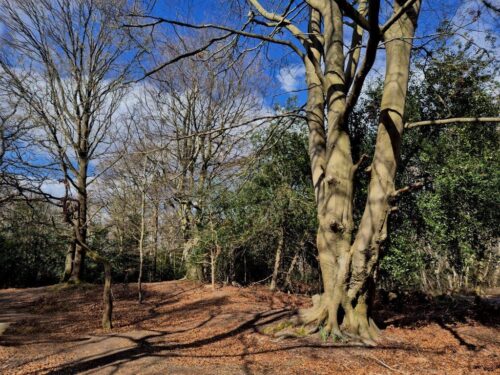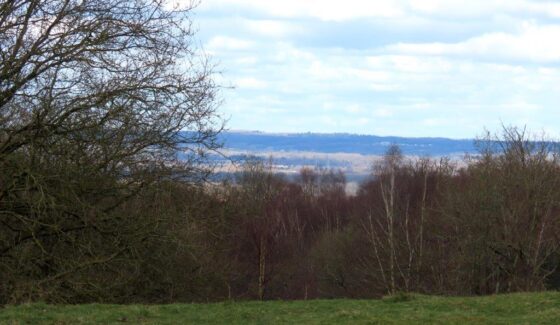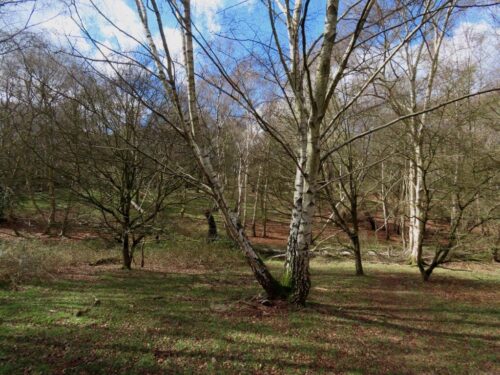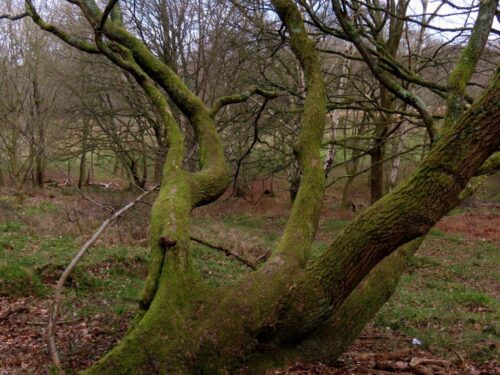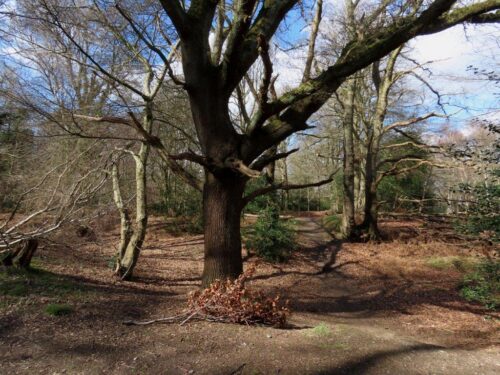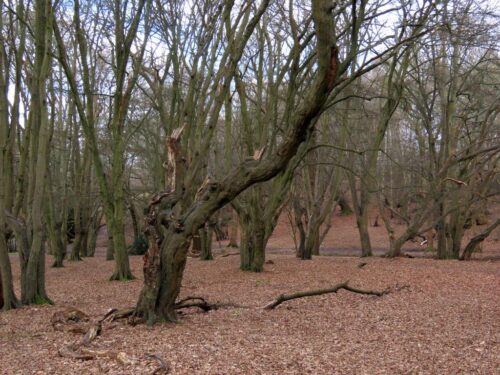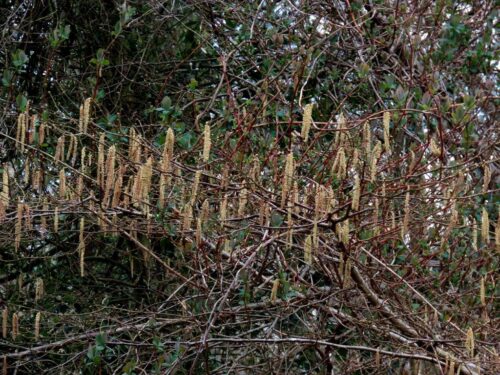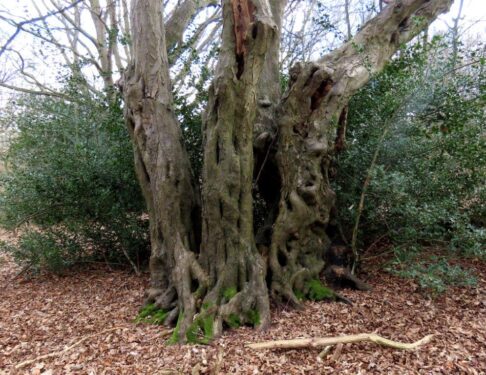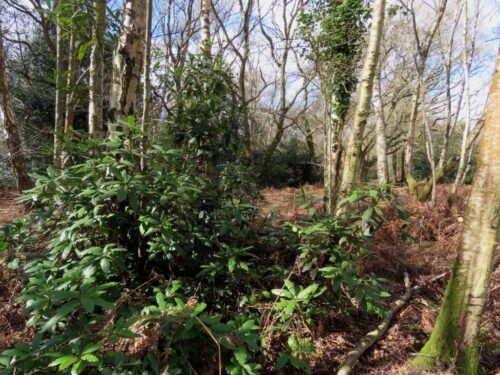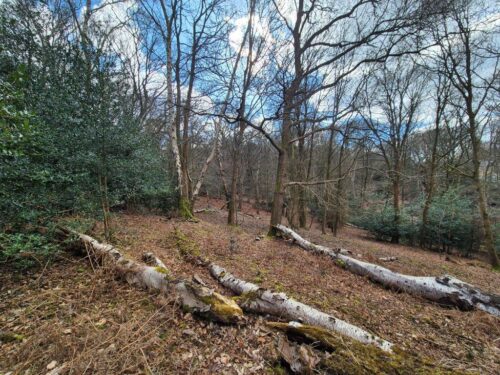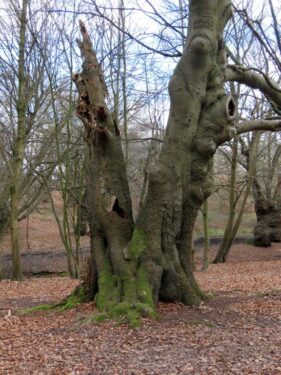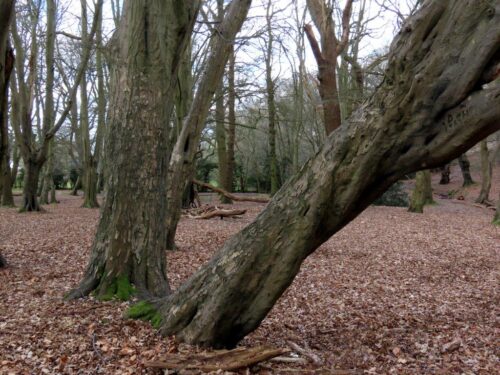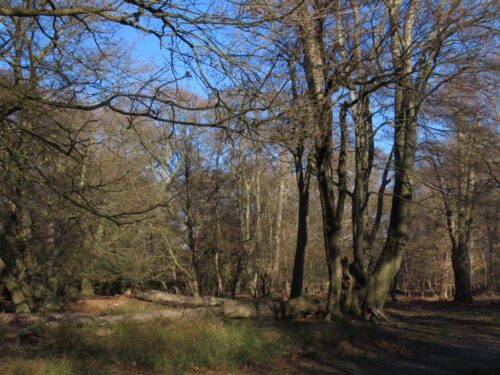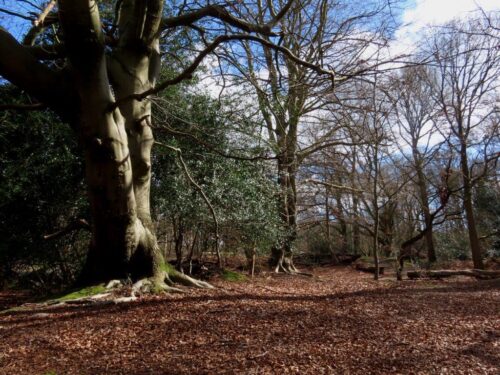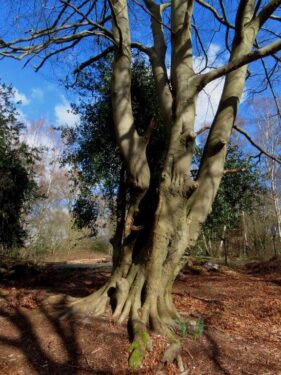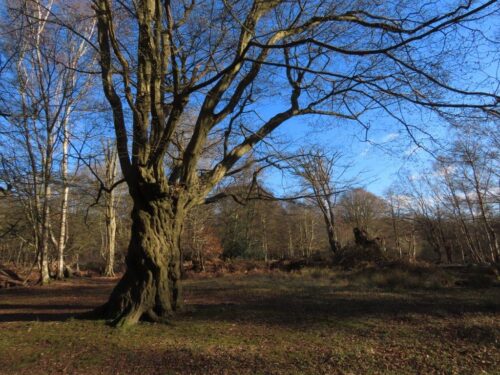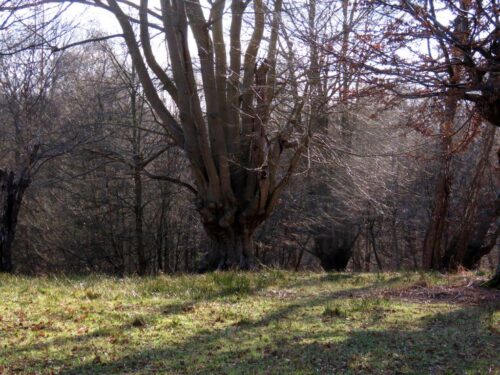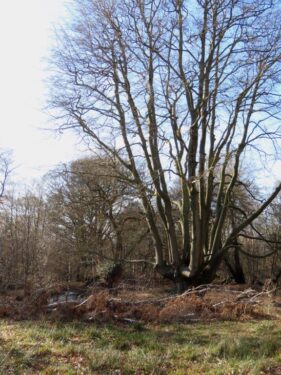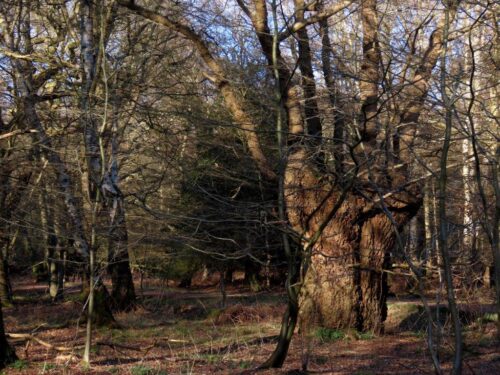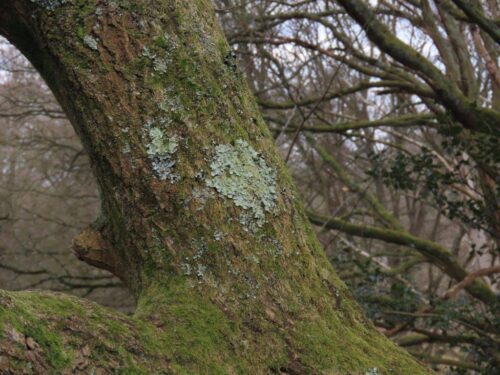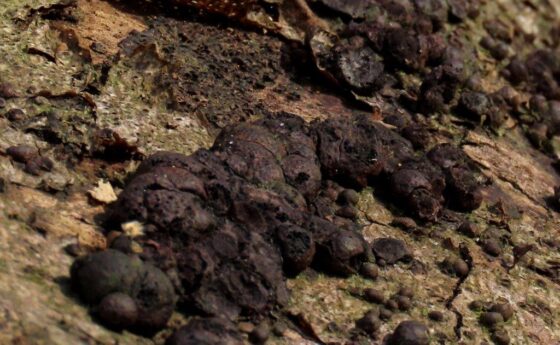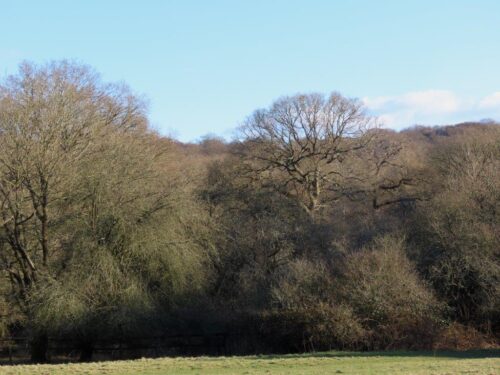A meeting in Epping Forest gave me a great opportunity to spend a couple of hours wandering round with a camera in a place I rarely visit, being the other side of Essex from us, and Essex is a large county! Largely within that part of modern Essex that lies inside the M25, it is not surprising it serves as vital greenspace for the city population: indeed, it is that function recognized in the 19th Century by the City of London Corporation that ensured its survival as all around was developed.
And on a sunny March Saturday it was very busy with walkers, joggers, cyclists and many other users. Not that my photos reflect that: by virtue of is size, it isn’t difficult to get away from the crowds, even around High Beach, one of the honeypot areas. High Beach or High Beech? The maps are inconsistent, but either works. It is high enough (look the views over Essex below), and with sandy and gravelly plateaux and slopes, upon which Beech trees thrive…
Epping Forest is a legal Forest, an area of land covered by feudal Forest Law. Some such places like the New Forest are barely afforested at all (at least not until 20th century coniferization), but Epping does fit the modern concept of forest (= large wood), albeit with clearings, heathy and grassy patches, springs and wetlands interspersed throughout.
There are wooded areas with all sorts of structural types, from high forest to coppice to wood-pasture pollards, and before they burst into leaf is the very best time to appreciate the skeleton of the woods, without the canopy catching all the light.
Where there is any understory, it is mostly Hazel, Holly and in places, rather less welcome, Rhododendron…
… while many larger veteran trees, mostly Oak, Beech and Hornbeam, now reside within a matrix of Silver Birch. As a colonizer species, spread by airborne seed, Birch soon takes over open spaces on sandy soils in the absence of management by humans, or wild or domesticated animals.
One of the wonderful aspects of Epping is the dead wood, both as standing dead wood, and left on the forest floor where it fell, always a powerhouse of biodiversity.
Once a royal hunting Forest, many of the veteran trees are pollards, the timber harvested above the browse-line of deer. And now, after sometimes many centuries, the trunks are natural sculptures, each a magnificent mosaic of living, dying and dead.
And not just the trees, but things living on them, a reflection of their age and consequent long-term continuity of habitat: epiphytic mosses and liverworts, lichens on the bark, and fungi decomposing dead wood back to nutrients – ashes to ashes, dust to dust….
All in all, it was a privilege to see the skeleton of the forest on such a lovely sunny day!
